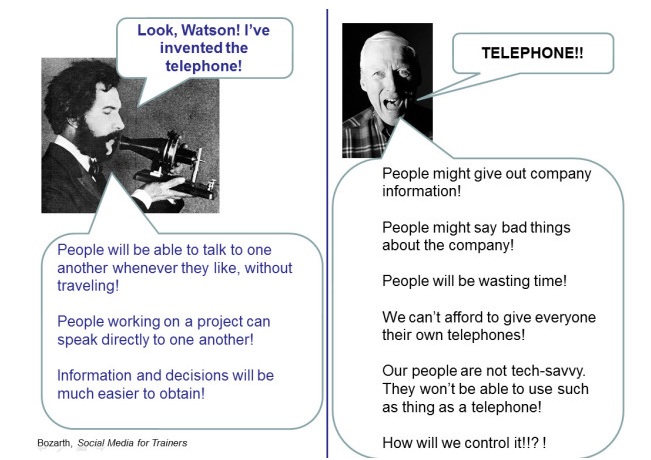My first tools in recruitment were a phone and a rolodex. I used them a lot but never said that I was telephone recruiting. My first MD had previously invested in a fax machine but regarded it as the devils own work come to wreck the recruitment industry so always discouraged us from using it. If anyone did they never said they were fax recruiting. Some candidates would put their CVs in an envelope with a handwritten covering letter and post it to us, clients would similarly send job description through the post, and some recruiters would also mailshot their clients with a selection of CVs. If placements occurred no-one called it postal recruiting.
But then the internet came and changed everything. We had emails, websites and job boards and were now internet recruiters or e-recruiters – because this was different but also a distraction. Funnily enough this approach is now just called recruitment, in fact it’s what most people would now refer to as ‘traditional recruitment’.
And then we got social.
Now the digital platforms would have us believe everyone is doing it. The latest Jobvite survey (an online survey completed by 1,855 recruiters and HR professionals) found 93% of recruiters using or planning to use social to support their efforts. But is this right? The recent employer perspectives survey from UKCES (drawn from 18,000 interviews with employers) found only 7% citing social as a recruitment channel. Whilst recruiters may not be well represented in this report, SMEs and smaller businesses – employers of around half UK employees, and unlikely to have specialist recruiters to complete online surveys – are.
So are we really doing that much social recruiting?
Well it depends on what you call social. Looking at the Jobvite results then their 93% only stands up if you regard LinkedIn as a social network…

Some might see it this way, but I don’t. It’s not a social channel but a content publishing platform. A database. And look at how these recruiters use LinkedIn…

Makes it about as social a a CV database – which I’m sure no-one would ever really call a social platform. Searching, tracking and vetting aren’t social. More talking less stalking required.
If we take away LinkedIn then recruiters don’t look quite as social as the 93% figure would have us believe. But how successful are the networks for hiring?

So LinkedIn gets results, as any database of more than 300 million people should. Not so good for Facebook and Twitter though…maybe it’s because of the way recruiters use them?

Showcasing and posting, instead of engaging and relationship building. At least there are mentions of referrals – as there should be given they still provide a large number of hires, particularly in the US – but then with enterprise social networks like Hollaroo there are possibly more effective ways to manage them.
Social recruiting is recruiting. Social networks can enable you to recruit well and more effectively. The bedrock of effective recruitment will always be understanding why you need someone new, what they will be doing, why you need to look externally, what exactly you have to offer the right person, whether the person you want will be happy with what you have to offer them, and lots more.
And once you know that then it will be about having the right conversations with the right people at the right time about the right things. Social should be enabling these to happen.
Everything else is just broadcast and advertising. Not very social.









